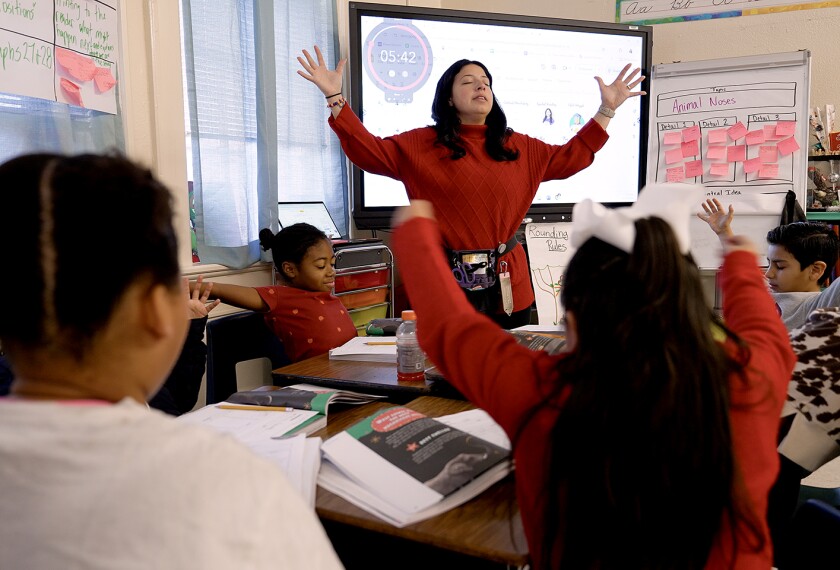The National Commission on Teaching and America’s Future is calling on states, districts, and higher education institutions to offer formal teacher-induction programs that last for years and offer more than just individual mentoring.
The Washington-based group studied such systems in several foreign countries and across the United States. Its findings were released here in a policy paper this month.
Not only does the induction period need to be longer—up to three years—but in most cases the purpose of induction needs to be more clearly defined, said Tom Carroll, the president of the private commission formed in 1994. The organization wants to see more comprehensive programs that bring new teachers into the field, in addition to helping them work in their classrooms.

“We’re trying to change people’s perception of what induction should be about,” Mr. Carroll said. Ideally, in the commission’s view, induction would include mentoring of individual teachers as part of a package of services. “We can’t just say ‘mentoring,’ because that means too many things to people,” he added.
More than half of new teachers receive mentoring or coaching to some extent, but only about 1 percent undergo a comprehensive induction program, according to Mr. Carroll. The policy paper defines induction as “both a phase—a set period of time—and a network of relationships and supports with well-defined roles, activities, and outcomes.”
Good induction systems, the paper says, should include such elements as opportunities to observe and be observed by other teachers, common planning time to work with colleagues and share lessons, participation in an external network of teachers, and giving teachers enough time to focus on their induction.
A Model System
Induction is one way of training teachers to become more effective and engaged in their jobs, and keeping them in the classroom— top priorities for the commission.
At a seminar the group held here Aug. 15-16 to follow up on last year’s Summit on High-Quality Teacher Preparation, a range of strategies was discussed for ensuring that teachers are well qualified, including the use of comprehensive induction programs. A second meeting is planned for this fall.
Richard W. Riley, the U.S. secretary of education during the Clinton administration, called on universities to improve their colleges of educations, and to better train their graduates to build partnerships within schools and within communities.
“Induction Into Learning Communities” is available from the National Commission on Teaching and America’s Future.
“That support starts with new teacher-induction programs,” said Mr. Riley, a co-chairman of the teaching commission.
Although comprehensive induction systems are common in several other countries, including New Zealand, Japan, and France, they have only recently gained widespread popularity in America.
The New Teacher Center at the University of California, Santa Cruz, has designed a two-year model teacher-induction program that includes an on-site adviser, assessments to foster a teacher’s goals, and professional development that includes interaction among teachers.
Ellen Moir, the center’s executive director, said the model has not only dramatically improved teacher retention, but also the quality of those novice teachers.
“Teacher retention is important, but accelerating teacher development, helping them become outstanding teachers, and improving student learning is what we’re really aiming for,” she said.
About 40 percent to 50 percent of new teachers receive no induction, a statistic the commission also wants to change. “They’re handed the keys to their rooms, and people wish them a good year,” Mr. Carroll said.
In contrast, he added, 80 percent to 90 percent of teachers who go through high-caliber induction programs stay in the field for five years or more. One prominent researcher estimates that at least 40 percent of new teachers leave before that mark.
Ms. Moir said she thinks induction is still only a part of a larger scaffold for building a good school. Her group, she said, is also working with administrators to produce more dynamic leadership that entices teachers to stay.
“We know that, even with a very outstanding comprehensive induction program,” Ms. Moir said, “a new teacher won’t stay at a school at the end of their induction unless it’s a thriving practice.”





